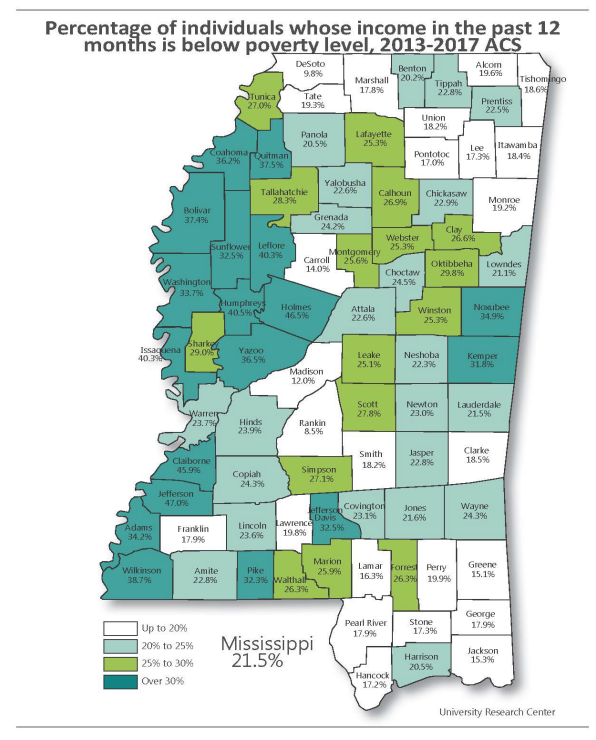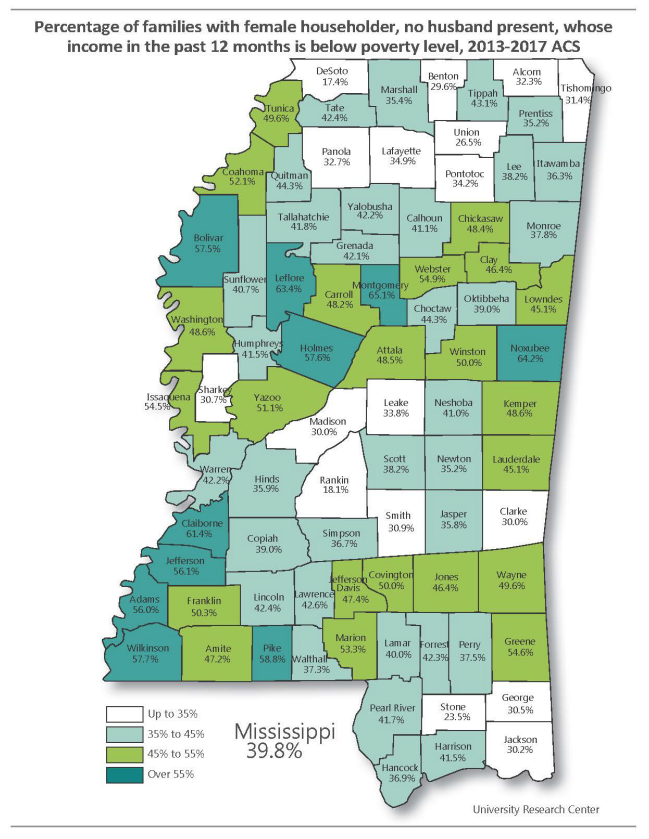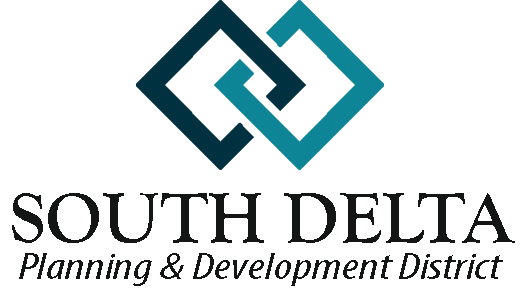Summary Background
INCOME & EDUCATION

Median Household Income
$31,192
South Delta PDD

Poverty Rate
31.4%
South Delta PDD

High School Graduate or Higher
79.06%
South Delta PDD

Bachelors Degree or Higher
20.36%
South Delta PDD
INCOME
The average 2019 median household income of the district is $28,826, a $544 improvement from 2016, while that of the State improved from $40,528 to $45,081 and the Nation, according to the 2020 ACS is $64,994. The district’s average median household income remains significantly lower than the State’s and Nation’s. Based on the 2021 American Community Survey 5 Year Estimates, 15% of the 40 reporting units of local government in the South Delta area had a median household income of less than $20,000 and 67.5% had a median household income of less than $30,000. Economically, the District continues to lag, significantly, behind the State and Nation. The percentage of households in Mississippi and the United States with an annual household income of $10,000 or less is 9.3% and 5.8% respectively; whereas, the percentage in the South Delta region is 18.34.
Transfer payments continue to make up a large share of personal income for all South Delta counties. Three of the counties in the South Delta area are among the counties with the highest percentage of transfer payments as a component of personal income in the state, Issaquena has the highest in the state, 61.2%, the regional average is 44.3% up from 37.7% in the previous CEDS. These percentages are well over Mississippi’s percentage of 26.2. Transfer payments are government payments to individuals that are not paid in return for goods and services to the government. Examples include social security, unemployment compensation and welfare payments.


In 2016 36.1% of South Delta’s citizens were living below the poverty level. In 2017 that percentage had decreased slightly to 35.6%. Although slightly improved, the percentage of persons living below the poverty is still over twice the national percentage. The segment of the population with the highest percentage below the poverty level is family households with a female head of household.


EDUCATION
The educational attainment level within the district had improved slightly between 2010 and 2016; however, according to the 2015-1019 ACS the average percentage of the district’s total population above 25 years of age that had completed high school or above had dipped to 73.23%, compared to 84.5% for the State. These numbers still reflect a considerable improvement in Education levels in the district since 2000, from a 50.7% high school completion percentage to 73.23%. These improvements are encouraging, but there is still much to be done in order for the South Delta region to compete in the State, the Nation, and the World.
With regard to income and education, these two factors must be one of the major focal points for improvement of the region. All other man-based factors are dependent on these things for improvement. The improved focus on workforce training and vocational education rather than the concept of the only way to a good job is through a college degree will continue to help make the region more competitive in attracting skilled employment opportunities.
